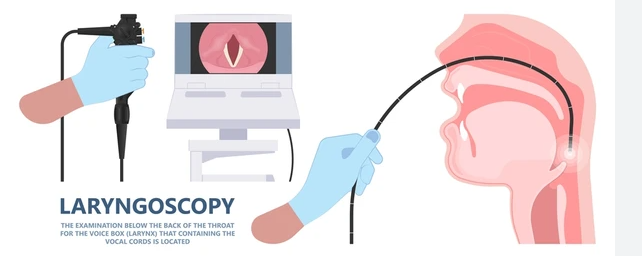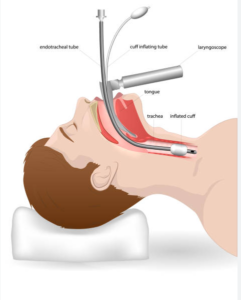LARYNGOSCOPY
A laryngoscopy is a procedure in which a physician looks down the throat with a specialised camera to view the vocal cords and larynx. Laryngoscopies are performed by professionals in the fields of otolaryngology and ear, nose, and throat (ENT).
What is the purpose of a laryngoscopy?
Certain issues involving the throat or vocal cords can be treated by laryngoscopy. To remove minor growths (tumours or polyps) on the vocal cords, for instance, long, thin devices can be passed down the laryngoscope. A laryngoscope’s tiny laser tip can also be used to burn away aberrant tissue.


When is a laryngoscopy necessary?
A laryngoscopy may be suggested by your healthcare practitioner to diagnose laryngitis or dysphonia, or hoarseness. In order to identify more severe diseases like laryngeal cancer, they might additionally perform laryngoscopies.
The Reason for Conducting the Test
Numerous disorders affecting the throat and voice box can be diagnosed by your physician with the aid of this test. This test might be suggested by your provider if you have:
- Persistently foul-smelling breath
- Breathing issues, such as dyspnea (loud breathing)
- Prolonged (chronic) coughing
- Spitting blood
- Having trouble swallowing
- Persistence of ear ache
- Having a stuck-in-your-throat feeling
- Smoker’s chronic upper respiratory condition
- Cancerous lump in the head or neck region
- Persistent ache in the throat
- Vocal issues such as hoarseness, weak voice, raspy voice, or lack of voice that persist longer than three weeks.
